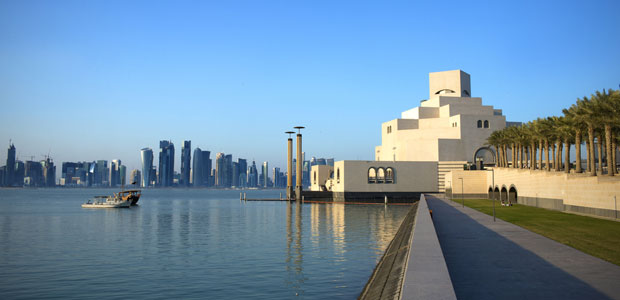
Friday, 27 February 2015
A new ranking of universities in the Middle East and North Africa must reflect the distinctive missions of institutions in the region, a conference heard.
Times Higher Education is planning to publish its first full ranking of the region’s universities at the THE MENA Universities Summit in the UAE in February next year, building on the flagship World University Rankings. These measure institutions’ performance on a range of measures such as reputation, research impact, teaching environment and internationalisation.
THE’s inaugural MENA Universities Summit in Qatar was told that a bespoke range of metrics would be used to compile the regional league table.
Comments made during a consultation session, held on 24 February 2015 as part of the conference, will help to decide what these should be.
Cesar Wazen, the director of the scholarships and partnerships office at Qatar University, said the MENA rankings should reflect the importance of teaching to institutions in the region.
“Our universities teach our students to have specific skills,” he said. “Our doctors do operations – we don’t have the luxury of having doctors doing research.
“Middle Eastern and North African universities do carry out research, but it may need to be measured in a different way,” Mr Wazen continued.
“Research is geared towards our societal needs,” he said. “It doesn’t have to be in English, it doesn’t have to be according to the standards that are set by the West, but it’s there – the ranking agencies just have to find it.”
This view was echoed by Maryam Riaz, president of the Middle East and North Africa Association for Institutional Research, who suggested that the weight placed on a number of measures for the World University Rankings could potentially be reduced for the regional table.
These included internationalisation – of faculty, since many universities were trying to increase the number of local staff they had, and of students, since institutions had a key role in educating a country’s workforce.
Ms Riaz said these could be replaced by a number of new metrics, which could attempt to measure factors including the accreditation of programmes and standards of governance.
A survey of employers exploring the quality of graduates could also be drawn upon, Ms Riaz suggested.
Conference attendees suggested a number of other issues that could be considered as part of a MENA ranking, including social media citations and international employability of graduates.
Concerns were raised that “relaxing” the ranking requirements would not do institutions any favours as they tried to raise their performance to match that of the world’s leading universities.
In the World University Rankings’ top 400, there are only 12 MENA universities, including institutions in Turkey.
But Ms Riaz said it was a question of being “realistic” about the stage of development that institutions were at, adding that MENA institutions would still be included in the global tables.
Phil Baty, the editor of the World University Rankings, urged institutions to submit their information to THE’s annual data collection round, so more of them could be considered for this year’s list.
The conference also heard from speakers who felt it was too early to rank the region’s universities.
Sultan Abu-Orabi, secretary general of the Association of Arab Universities, said research investment and performance was still at a comparatively low level, and that the region suffered from a “brain drain” of the best talent to the Western world.
These issues needed to be addressed, he said, “before we look at ranking”.
To show the potential of a MENA ranking, the event featured the publication of a top 30 snapshot of institutions based on just one measure, research impact, calculated using citation scores from Elsevier’s Scopus database.
Texas A&M University at Qatar was in first place ahead of the Lebanese American University. Saudi Arabia’s King Abdulaziz University was third, ahead of Qatar University and the American University of Beirut.
To ensure your university is included in the annual institutional data collection round, which takes place over the next two months, please email profilerankings@timeshighereducation.com
Register to continue
Why register?
- Registration is free and only takes a moment
- Once registered, you can read 3 articles a month
- Sign up for our newsletter
Subscribe
Or subscribe for unlimited access to:
- Unlimited access to news, views, insights & reviews
- Digital editions
- Digital access to THE’s university and college rankings analysis
Already registered or a current subscriber? Login



